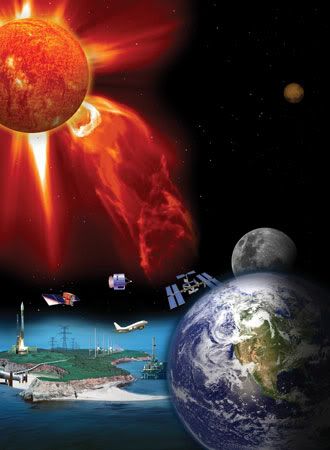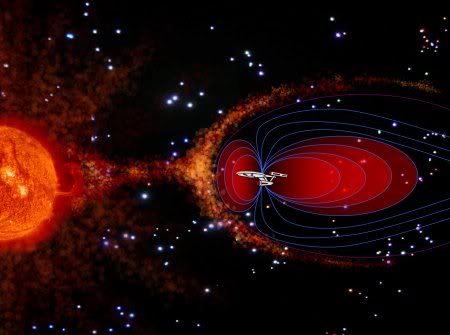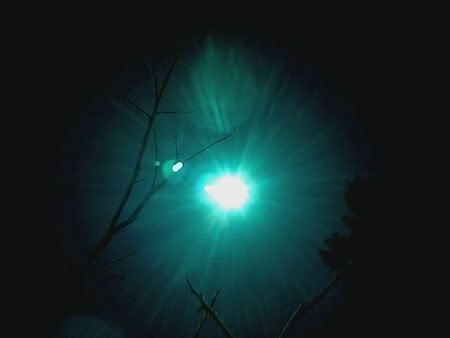Friday 29 March 2013
Geomagnetic Storm Rising HD
Best viewed with window expanded
GEOMAGNETIC STORM UNDERWAY: A minor (Kp=5) geomagnetic storm is underway around the poles as a medium-speed solar wind stream buffets Earth's magnetic field. High-latitude sky watchers should be alert for auroras
The sun seemed to be flatlining right after St.Patrick's Day, but not all is as it seems -- is it.
In fact she had been having a private party all by herself "on the other side" or so she thought. STEREO A & B were on to her right from the get go.
More at http://trudi-tmw.blogspot.ca/2013/03/...
Be sure to read the story and enjoy the aurora borealis.
Sunday 17 March 2013
Understanding the Sun

You may have noted that I have been writing, as of late, more about the sun than perhaps any other star, planet or even the super massive black hole. Although super novas are not far off from among my favourite and that special moment of complete awe. In my last post “Here Comes The Sun” I took you back in time and how in my childhood I first started to get interested in the mysteries of our parent star, the sun, and why its mysteries is probably among my top favourites. Plus, more than that, the brain skills of the physicists and science technological engineers who put together these instruments like innards of an old vacuum cleaner and have them orbit the sun in complete synchronization, so we all can enjoy and learn about the sun.
Well, to my delight and hopefully so also yours, a couple of days after I had posted my last post (Here Comes The Sun), NASA’s Heliophysics Research Team provided me with some further insight of what our sun is up to lately as well as in the near future. Including some more solar instruments, SDO, SOHO, TRACE and STEREO again among the solar observing satellites and ACE probably the most heroic satellite of them all, you’ll learn about in this post.
It is not by mere chance that heliophysicists are gathering data of our sun’s activities, solar winds, solar flares, CME’s (coronal mass ejection) and solar storms; and animators bringing the collected data into visual video snippets so that people like myself can gather these clips and bring them together to form a visual story of our heliosphere and our sun’s activities within it.
There are two very important reasons why the solar physics team are taking a much closer look to understand the sun.
President Obama, although he nixed the moon project where our future astronauts’ mission is to walk on and explore Mars, rogue asteroids and other space missions, training on the moon, astronauts would have familiarized themselves with space activities, the president did however give the go ahead for space missions such as travelling to Mars, but not land on it, as well as to land on rogue asteroids. This brings a concern to solar physicists who know about the sun and what damage radiation can do. While President Obama did not give the funds for astronauts to land on Mars, NASA however is training future astronauts nevertheless how to land and explore on Mars.
When our astronauts first went to the moon in July 20, 1969, little was understood about our sun, nothing at all about solar flares, coronal mass ejection and much less about solar storms. In that time NASA thinking that aluminium foil is the best shield against “space weather”, our astronauts would be facing while on the moon, didn’t realize this was actually the worst material to use in keeping our astronauts safe from harm. Radiation, when hitting aluminium passes through the aluminium and splits, scattering many more radioactive particles in many directions. Luckily there was no solar activity in the time our boys went to the moon and now it is well understood that water is the key to absorb radiation and give our astronauts, particularly on the International Space Station a “safe room” whenever alerted a solar flare has erupted.
(excerpt from NASA) During the Apollo program, there were several near-misses between the astronauts walking on the surface of the Moon and a deadly solar storm event. The Apollo 12 astronauts walked on the Moon only a few short weeks after a major solar proton flare would have bathed the astronauts in a 100 rem blast of radiation. Another major flare that occurred half way between the Apollo 16 and Apollo 17 moonwalks would have had a much more deadly outcome had it arrived while astronauts were outside their spacecraft playing golf. Within a few minutes, the astronauts would have been killed on the spot with an incredible 7000 rem blast of radiation. The daily dosage of radiation on the Space Station is about equal to 8 chest X-rays per day.
For now what engineering physicists have come up with to keep our boys and girls safe from harm is a water encased “safe room” on board the Ares l spacecraft that will take our astronauts to rogue asteroids and Mars. (It works in the same principal as an insulated room excepting it is insulated with water.) What they are thriving for is to build a magnetosphere for the entire spacecraft which then would not only have protection for our astronauts but also for the instruments on board.
This is the second reason why the solar physics team lead at NASA's Marshall Space Flight Center in Huntsville, Alabama, want to make sure our technology right here on earth is protected from these solar storms. As electronic technologies have become more sophisticated and more embedded into everyday life, they have also become more vulnerable to solar activity. On Earth, power lines and long-distance telephone cables might be affected by auroral currents. Radar, cell phone communications, and GPS receivers could be disrupted by solar radio noise. Experts who have studied the question say there is little to be done to protect satellites from a Carrington-class flare. In fact, a recent paper estimates potential damage to the 900-plus satellites currently in orbit could cost between $30 billion and $70 billion. What Carrington saw was a white-light solar flare—a magnetic explosion on the sun. The explosion produced not only a surge of visible light but also a mammoth cloud of charged particles and detached magnetic loops—a "CME"—and hurled that cloud directly toward Earth. The next morning when the CME arrived, it crashed into Earth's magnetic field, causing the global bubble of magnetism that surrounds our planet to shake and quiver. Researchers call this a "geomagnetic storm." These kinds of solar storms have their own magnetic field and our earth’s magnetosphere is virtually powerless against that.
It happened again in December 2005, X-rays from another solar storm disrupted satellite-to-ground communications and Global Positioning System (GPS) navigation signals for about 10 minutes. The Carrington event is the biggest. It's possible to delve back even farther in time by examining arctic ice. Energetic particles leave a record in nitrates in ice cores, here again the Carrington event sticks out as the biggest in the past 500 years.
No wonder NASA and other space agencies around the world have made the study and prediction of flares a priority.
Right now a fleet of spacecraft is monitoring the sun, gathering data on flares big and small that may eventually reveal what triggers the explosions.
TRACE is probably among my favourite satellites because it takes images in amazingly clear X-Ray. I remember when my father took time off his busy schedule when I was a child to take me to a parade, perhaps it was a Santa Clause parade I’m really not sure. I also never did see much of the parade, to my father’s dismay. It all turned to be a viewing of the sun instead when my father inadvertently bought some large chocolate figure wrapped in deep red see through wrapping paper. I unwrapped the chocolate, smoothed out the cellophane and then held it to my eyes. It was the first time I saw the sun “red with anger” and every time I see images taken by TRACE in that deep angry red, it reminds me of that day and the parade. Sometimes I still wonder what the parade was about.
Research won't prevent another Carrington flare, but it may make the "flurry of surprise" a thing of the past.
Wish you all a very relaxing weekend and a safe week ahead.
The solar satellites:
TRACE, (Transition Region and Coronal Explorer) was launched 02-Apr-1998- a three-axis stabilized spacecraft, uses an instrument provided guide telescope as the fine Sun sensor. The spacecraft must null the peak error to the guide telescope to within 20 arcseconds. The TRACE telescope has an image motion compensation mechanism which can attenuate jitter to about 0.1 arcseconds resolution. The Attitude Control System (ACS) uses three magnetic-torquer coils, one digital Sun sensor, six coarse Sun sensors, four reaction wheels, one three-axis magnetometer, and three two-axis inertial gyros. The ACS uses the spacecraft computer to perform closed loop attitude determination and control. (ESA/NASA)
ACE, (Atmospheric Chemistry Experiment) is a satellite mission on board the Canadian satellite SCISAT-1, that takes measurements of the Earth's atmosphere.
The measurements consist of spectra and images that are used to investigate chemical and dynamical processes in our atmosphere, with a particular emphasis on ozone depletion in the Arctic stratosphere.
Dr. Peter Bernath from the Department of Chemistry at the University of Waterloo is the head scientist of the mission, which involves the collaboration of members from several universities, industries and other organizations in Canada, NASA/ESA.
SOHO, the (Solar & Heliospheric Observatory), is a project of international collaboration between ESA and NASA to study the Sun from its deep core to the outer corona and the solar wind.
SOHO was launched on December 2, 1995. The SOHO spacecraft was built in Europe by an industry team led by prime contractor Matra Marconi Space (now EADS Astrium) under overall management by ESA. The twelve instruments on board SOHO were provided by European and American scientists. Nine of the international instrument consortia are led by European Principal Investigators (PI's), three by PI's from the US. Large engineering teams and more than 200 co-investigators from many institutions supported the PI's in the development of the instruments and in the preparation of their operations and data analysis. NASA was responsible for the launch and is now responsible for mission operations. Large radio dishes around the world which form NASA's Deep Space Network are used for data downlink and commanding. Mission control is based at Goddard Space Flight Center in Maryland.
STEREO (Solar TEerrestrial RElations Observatory) is the third mission in NASA's Solar Terrestrial Probes program (STP). Launched October 2006, will provide a unique and revolutionary view of the Sun-Earth System. The two nearly identical observatories - one ahead of Earth in its orbit, the other trailing behind - will trace the flow of energy and matter from the Sun to Earth. They will reveal the 3D structure of coronal mass ejections; violent eruptions of matter from the sun that can disrupt satellites and power grids, and help us understand why they happen. STEREO will become a key addition to the fleet of space weather detection satellites by providing more accurate alerts for the arrival time of Earth-directed solar ejections with its unique side-viewing perspective.
The two STEREO launched October 2006 observatories are nearly identical with selective redundancy. The building of the spacecraft bus and the integration of the instruments were done by the Johns Hopkins University Applied Physics Laboratory (APL).
The two solar-powered observatories with 3-axis-stabilization, each had a mass at launch of approximately 1,364 pounds (620 kilograms, including propellant). The spacecraft communicate with the APL-based Mission Operations Center via NASA’s Deep Space Network.
SDO (Solar Dynamics Observatory) contains a suite of instruments that provide observations that will lead to a more complete understanding of the solar dynamics that drive variability in the Earth's environment. This set of instruments does the following:
1.Measure the extreme ultraviolet spectral irradiance of the Sun at a rapid cadence
2.Measure the Doppler shifts due to oscillation velocities over the entire visible disk
3.Make high-resolution measurements of the longitudinal and vector magnetic field over the entire visible disk
4.Make images of the chromosphere and inner corona at several temperatures at a rapid cadence
5.Make those measurements over a significant portion of a solar cycle to capture the solar variations that may exist in different time periods of a solar cycle
The Science Teams receive the data from SDO. They then process, analyze, archive, and serve the data.
NASA/HMI (Helioseismic and Magnetic Imager)Stanford University. AIA (Atmospheric Imaging Assembly)Lockheed Martin Solar Astrophysics Laboratory. EVE (Extreme Ultraviolet Variablity Experiment)University of Colorado.
Tuesday 5 March 2013
AR1686 unleashed an M1-class solar flare HD
Best viewed with window expanded.
SOLAR ACTIVITY INCREASES: Both sides of the sun are active today. On the farside, an explosion around 0400 UT hurled a massive CME into space. On the Earthside, sunspot AR1686 unleashed an M1-class solar flare at 0754 UT. Stay tuned for updates.


